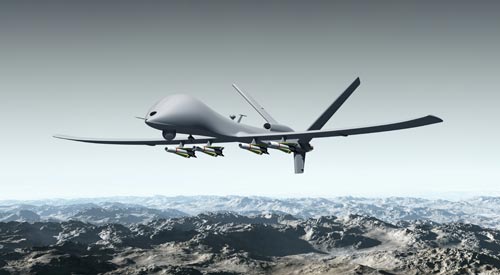-
Business
-

Policy & Business
-
-
Federal IT
-

Information Technology
-
-
State & Local
-

State & Local Government
-
-
Defense
-

Defense & Intelligence
-
-
Healthcare
-

Healthcare Policy & IT
-
-
Energy
-

Energy Policy & Technology
-
-
Education
-

Education Policy & Technology
-
Future Spy Satellites Just Got Exponentially Smaller
Nextgov: Future spy satellites may unfold like origami birds, collecting image data along long, flat sensor arrays that weigh almost nothing. By replacing the bulky telescopic lenses that make today’s spy sats among the biggest and most expensive things in space, light-sensitive microchips promise far cheaper access to orbital imagery.
Last month, Lockheed Martin released the first images from its experimental Segmented Planar Imaging Detector for Electro-optical Reconnaissance, or SPIDER, program. Funded by the Defense Advanced Research Projects Agency, or DARPA, SPIDER is basically a telescope on a microchip. But it collects light data very differently from a conventional telescope.
Top Stories
- When May a Robot Kill? New Pentagon Policy Tries to Clarify
- Defense Logistics Agency to Shift Warehouse Management to Commercial Software
- Homelessness Among Veterans Has Been Cut in Half since 2010, VA Says
- Defense Industry Decries Possible GOP-led Spending Cuts
- Let’s Make It Easier to Share Top-Secret Data With Allies, Intel Leader Says
- Gillibrand Ditches Military-Services Style Cyber Academy Idea for DOD Scholarship Program in NDAA
- It’s Finally Here: Pentagon Releases Plan To Keep Hackers Out Of Its Networks
- DISA’s Plea to Industry: Bring Us Battlefield-Ready Tech
- How Elon Musk’s Twitter Buy Raises Cybersecurity Risks For The Rest Of Us
- Why Defense Budgets Will Stay High After the Ukraine War
- Contractors’ Reluctance to Work With the Pentagon on Cybersecurity Is Leaving Vulnerabilities, DOD Official Says
- Defense Department Health Plan Cuts Its Pharmacy Network by Nearly 15,000 Outlets
- DISA’s Sweeping New Plan Takes Aim at Data Silos, Mistagged Info
- Inside the US Army’s ‘warfighting’ cloud
- Army Updates Cyber Training After Some Graduates Weren’t Ready for Their Jobs
- The US Weighs Escalation Risk As Ukraine Asks for Longer-range Missiles
i360Gov Newsletters
The most significant government policy, business, and technology news and analysis delivered to your inbox.
Subscribe NowTrending
- DISA’s Plea to Industry: Bring Us Battlefield-Ready Tech
- VA Systems are Vulnerable to Cyber Intrusions Due to Lack of Effective Oversight, Report Says
- Here's What Can Happen When the Average Clearance Holder Mishandles Classified Information
- How Elon Musk’s Twitter Buy Raises Cybersecurity Risks For The Rest Of Us
- TSA Collaborates with European Security, Manufacturers To Upgrade Security Tech
- Defense Department Health Plan Cuts Its Pharmacy Network by Nearly 15,000 Outlets
- It’s Finally Here: Pentagon Releases Plan To Keep Hackers Out Of Its Networks
- Contractors’ Reluctance to Work With the Pentagon on Cybersecurity Is Leaving Vulnerabilities, DOD Official Says
Also in Defense & Intelligence
About
i360Gov is an intelligent network of websites and e-newsletters that provides government business, policy and technology leaders with a single destination for the most important news and analysis regarding their agency strategies and initiatives.
Contact Us
Telephone: 202.760.2280
Toll Free: 855.i360.Gov
Fax: 202.697.5045











